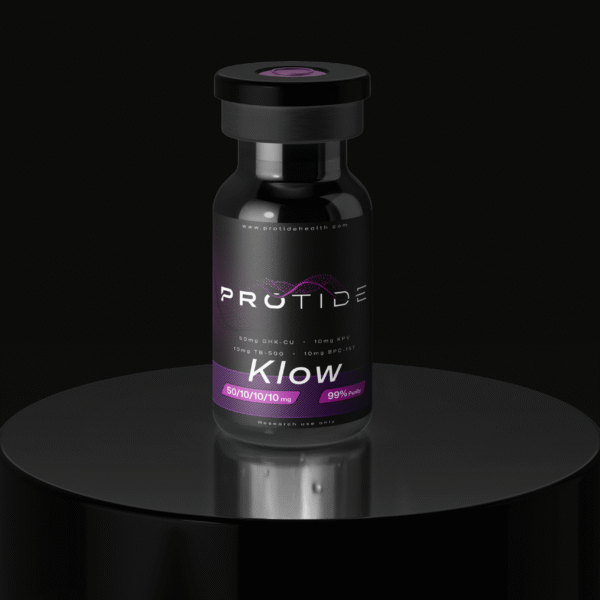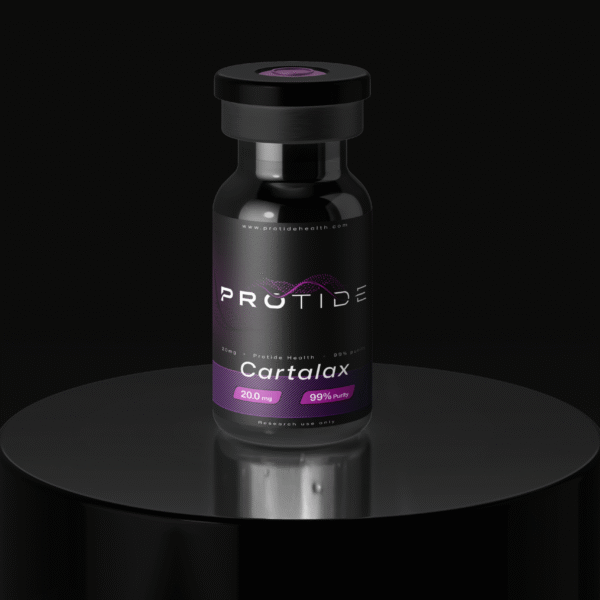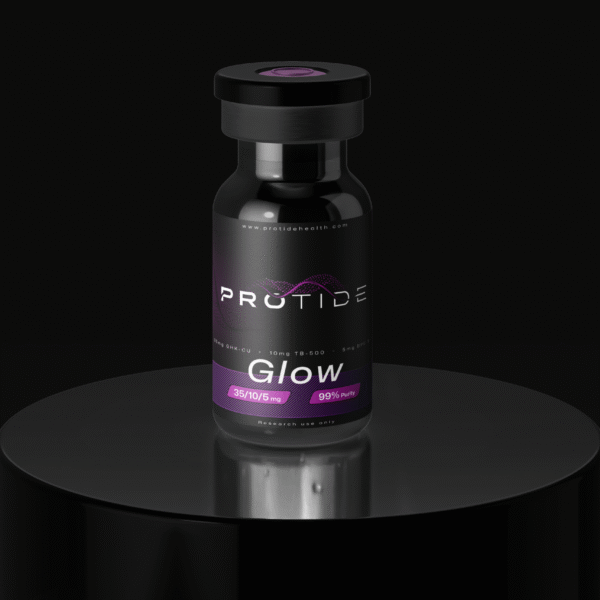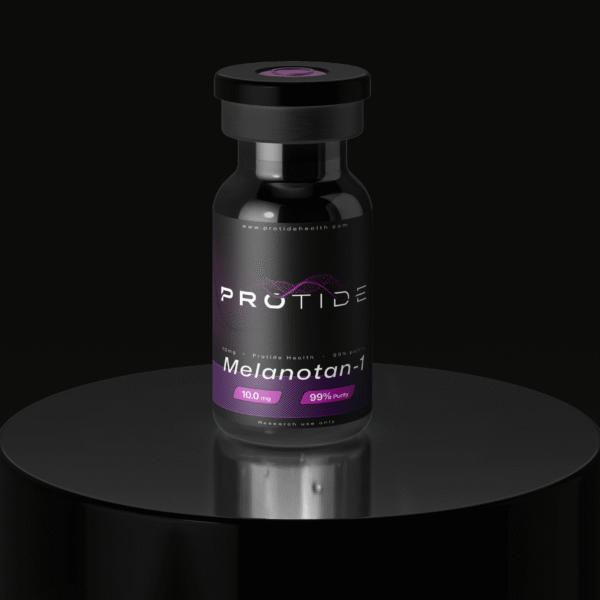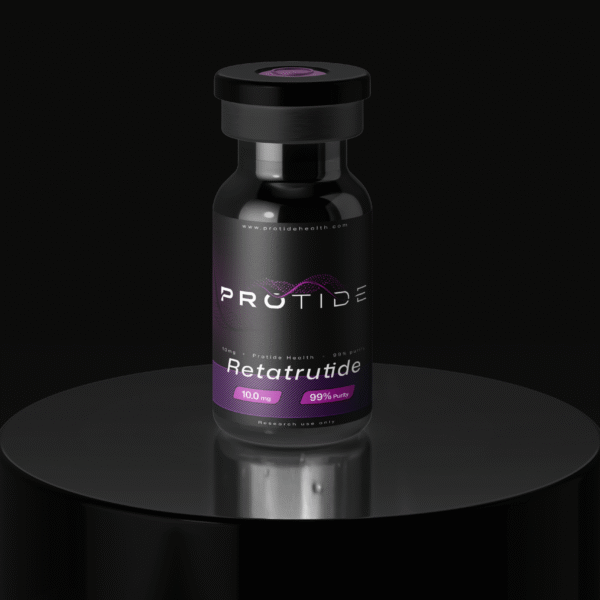
Snap-8 10mg
As a topical or transdermal research ingredient, Snap-8 is investigated for its potential to soften the appearance of dynamic (“expression”) lines in high-movement facial areas while avoiding injections.
Description
Snap-8 (Acetyl Octapeptide-3): Peptide for Expression-Line Research
Overview
Snap-8 (acetyl octapeptide-3) is a synthetic octapeptide derived from the N-terminal portion of SNAP-25, explored in research settings for its ability to modulate the protein–protein interactions that drive acetylcholine-dependent neuromuscular signaling. As a topical or transdermal research ingredient, Snap-8 is investigated for its potential to soften the appearance of dynamic (“expression”) lines in high-movement facial areas while avoiding injections. Most human data in this class come from its predecessor, acetyl hexapeptide-8 (AH-8/Argireline), as well as from microneedle delivery trials; direct randomized clinical trials isolating Snap-8 remain limited. MDPI
Molecular Identity & Composition
INCI/Name: Acetyl Octapeptide-3 (Snap-8).
Sequence: Ac-Glu-Glu-Met-Gln-Arg-Arg-Ala-Asp-NH₂ (Ac-EEMQRRAD-NH₂).
Design Rationale: Extends the Argireline (AH-8) motif to enhance interference with SNAP-25–dependent vesicular fusion in the SNARE complex (preclinical rationale). MDPI
Mechanism of Action: SNARE-Complex Modulation (Research Context)
Dynamic facial lines are driven by repeated neuromuscular activation. The SNARE complex—syntaxin-1, SNAP-25, and synaptobrevin—mediates Ca²⁺-triggered synaptic vesicle fusion and acetylcholine release at the neuromuscular junction. Class-level “BoNT-mimetic” cosmetic peptides (e.g., AH-8) and next-gen analogs (e.g., Snap-8) are investigated for competitively impairing assembly/stability of SNARE interactions, thereby reducing neurotransmitter release and muscle fiber activation. This is conceptually aligned with BoNT’s pharmacology (which cleaves SNAP-25) but is non-enzymatic and topical/transdermal in intent. PMC
What This Could Mean for the Individual (Research-Only)
Potential areas of interest in controlled cosmetic research settings:
Expression-line softening (forehead, glabella, crow’s feet): Early human studies with the class (AH-8) report modest improvements in periorbital lines with good tolerability; Snap-8 is explored as a rationally modified analog. JCAD
Needle-free approach: Investigations emphasize convenience and comfort versus injections; outcomes are typically gradual and subtle, requiring consistent application over weeks. PubMed
Targeted delivery to high-movement zones: Dissolving hyaluronic-acid microneedle patches can enhance peptide entry through the stratum corneum, a known barrier for macromolecules, enabling measurable wrinkle-metric changes in clinical studies. PMC
Evidence Overview
1) Direct Snap-8 Data
Analytical & Formulation Science: A validated LC–MS/MS method quantifies Snap-8 in biodegradable microneedle patches, enabling quality control and dose verification—key for rigorous research. (Method LOQ 0.0125 ng/mL; applied to patch matrices.) SpringerOpen
2) Class-Level Human Data (Argireline/AH-8)
Randomized, placebo-controlled trials: Multiple studies of AH-8 (topical creams) show modest improvements in expression lines over 4–8+ weeks in some cohorts, with favorable tolerability; others find neutral results—overall suggesting small, incremental effects rather than dramatic changes. JCADPMC
3) Delivery Science—Microneedles & Wrinkle Outcomes
Soluble/dissolving microneedle patches: Randomized clinical trials demonstrate statistically significant improvements in facial wrinkle scores with microneedle devices, and split-face trials show added benefit when microneedles are loaded with AH-8 versus blank patches—supporting the delivery-plus-active paradigm explored for Snap-8. PubMedanndermatol.org
Takeaway: The weight of current evidence supports feasibility and tolerability of class-level neuromodulating peptides and delivery-aided approaches; head-to-head, randomized human trials isolating Snap-8 specifically are still needed to define effect size and durability.
Formulation & Research Use Considerations
Topical Creams/Serums: Straight topical routes face skin-barrier limits for peptides (~1 kDa); outcomes may depend heavily on vehicle design (e.g., multiphase emulsions, penetration enhancers) and adherence. PMC
Dissolving Microneedle Patches (HA/CLHA): Create transient microchannels that can ferry hydrophilic peptides into viable epidermis/upper dermis; human studies report wrinkle-score improvements and good skin tolerability over 4–12 weeks with weekly or multi-weekly use. PubMed
Analytical QC: LC–MS/MS methods enable verification of peptide identity, content uniformity, and stability in complex patch matrices, strengthening study reproducibility. SpringerOpen
Practical Study Design Notes (for Investigators)
Populations of Interest: Adults with dynamic periorbital/perioral/forehead lines seeking non-invasive options in cosmetic research. PubMed
Endpoints: High-resolution imaging (e.g., Antera 3D, VISIA), validated wrinkle scales (Merz; crow’s-feet grading), skin elasticity (cutometry), hydration (corneometry), and participant-reported outcomes. anndermatol.org
Regimens Seen in Literature:
Microneedle patches: Weekly application (∼4 hours to full dissolution) over 4–5 weeks or longer; or combined with daily wrinkle creams in 12-week protocols. anndermatol.orgPubMed
Topical peptides: Twice-daily application for 4–12 weeks; effect sizes vary with formulation and site. JCAD
Safety, Tolerability & Expectations
Cutaneous Tolerability: Across class-level trials, adverse effects are typically mild and transient (itching, stinging, dryness); serious events are uncommon. Microneedle studies report good dermal tolerability. JCADPubMed
Magnitude & Onset: Expect gradual, modest changes over weeks; delivery-enhanced approaches (e.g., microneedles) may produce earlier visible changes in objective wrinkle metrics versus cream alone. anndermatol.org
Positioning: Investigational peptides are discussed as adjuncts in cosmetic research, not replacements for in-office neuromodulators; appropriate expectations and consistent use are essential. PubMed
Limitations & Unanswered Questions
Evidence Gaps: Few peer-reviewed, randomized human trials isolating Snap-8 exist; most efficacy signals come from AH-8 or delivery-technology studies. MDPI
Translational Challenge: Peptide skin permeability remains the key hurdle; outcomes depend on formulation science and delivery. PMC
Durability & Dose–Response: Long-term persistence, optimal concentration, and combination strategies (e.g., with HA or adenosine) merit further study. PubMed
Conclusion
Snap-8 represents a rational, non-invasive neuromodulating peptide conceptually aligned with SNAP-25–targeted strategies for dynamic lines. Current published literature substantiates analytical-quality control for Snap-8 in microneedle formats, class-level clinical signals with AH-8, and device-assisted delivery that can improve objective wrinkle metrics. For individuals participating in cosmetic research, Snap-8-based protocols may be of interest when framed as subtle, adjunctive approaches that prioritize tolerability and convenience—pending robust, Snap-8–specific randomized trials to quantify effect size and durability. SpringerOpen
Key Citations
SNARE Biology / Mechanism — Rizo J. Molecular Mechanisms Underlying Neurotransmitter Release. Nature Reviews Molecular Cell Biology (2022). PMC
Snap-8 Identity & Analytical QC — Ji M. Method development for acetyl octapeptide-3 analysis by LC–MS/MS; quantification in microneedle patches. J Anal Sci Technol (2020). SpringerOpen
Snap-8 Sequence & Rationale — Nguyen TTM. Non-Invasive Peptides as the Future of Botox Alternatives (review; notes Snap-8 sequence/derivation). Cosmetics (2024). MDPI
Class-Level Efficacy (AH-8) – RCT (crow’s feet) — Aruan RR. Double-blind randomized trial of AHP-3 vs placebo for crow’s feet. JCAD (2023). JCAD
Class-Level Efficacy (AH-8) – Mixed/Neutral — Henseler H. Visia-based, double-blind serum study; non-significant differences with Argireline side. GMS Interdiscip Plast Reconstr Surg DGPW (2023). PMC
Microneedles + Wrinkle Outcomes (12-week) — Hong JY. Randomized trial: soluble HA microneedle patch ± wrinkle cream. J Cosmet Dermatol (2018). PubMed
Microneedles + AH-8 Add-On (Split-Face) — An JH. CLHA microneedle patch with/without AHP-8; added benefit over patch alone. Ann Dermatol (2019). anndermatol.org
Peptide Transdermal Delivery (Review) — Liu T. Recent advances in microneedles-mediated transdermal delivery of protein and peptide drugs. Acta Pharm Sin B (2021). PMC
Legal Disclaimer
This document is provided for research and educational purposes only. Snap-8 (acetyl octapeptide-3) and related microneedle/peptide combinations are not approved by the U.S. Food and Drug Administration (FDA) or other regulatory bodies for the treatment of any medical condition. No claims are made regarding diagnosis, mitigation, treatment, or prevention of disease. Any use should occur exclusively within controlled cosmetic or biomedical research settings under applicable laws, institutional review, and good clinical/laboratory practice.
Additional information
| Weight | 1 lbs |
|---|---|
| Dimensions | 1 × 1 × 1 in |

